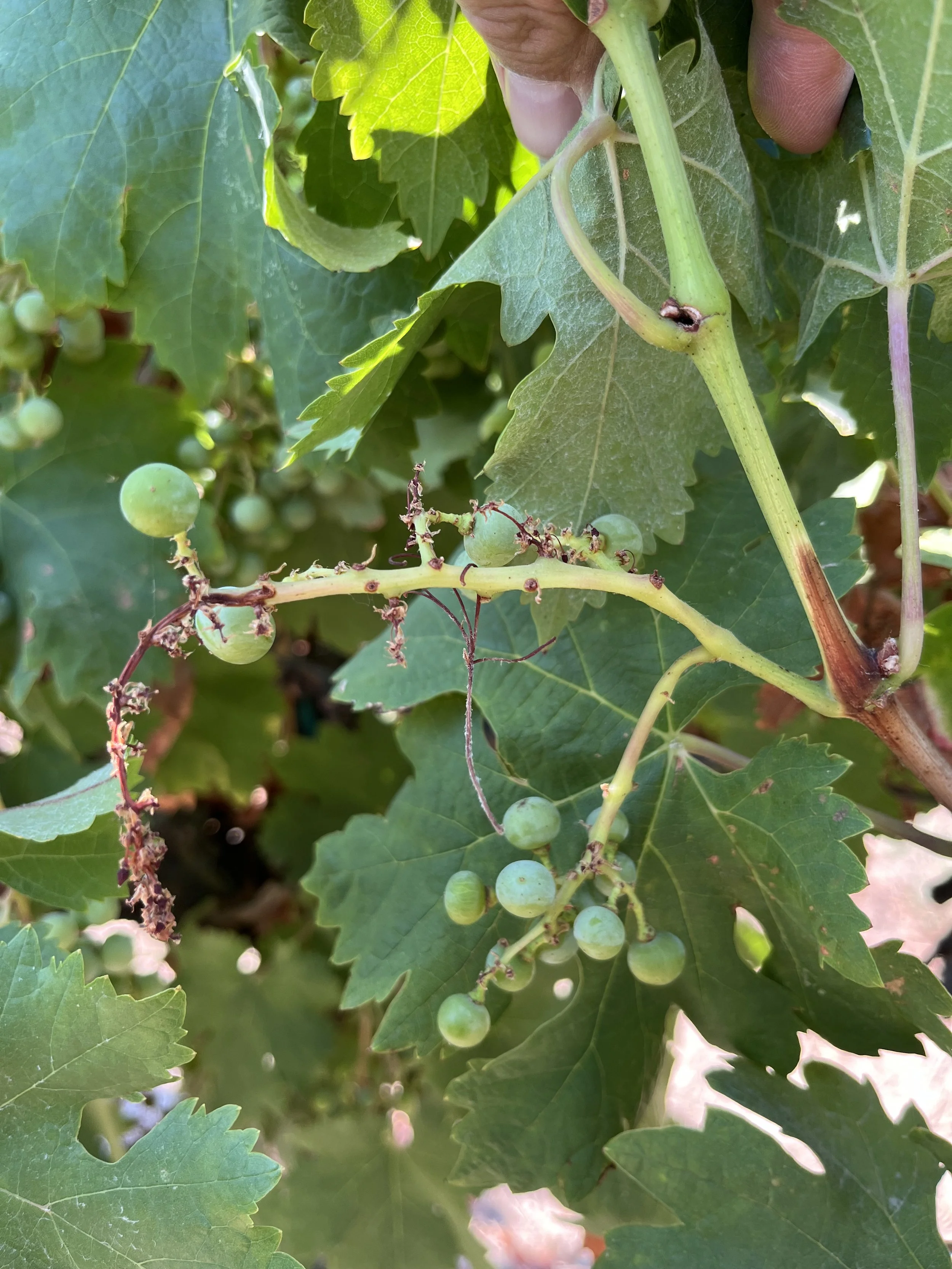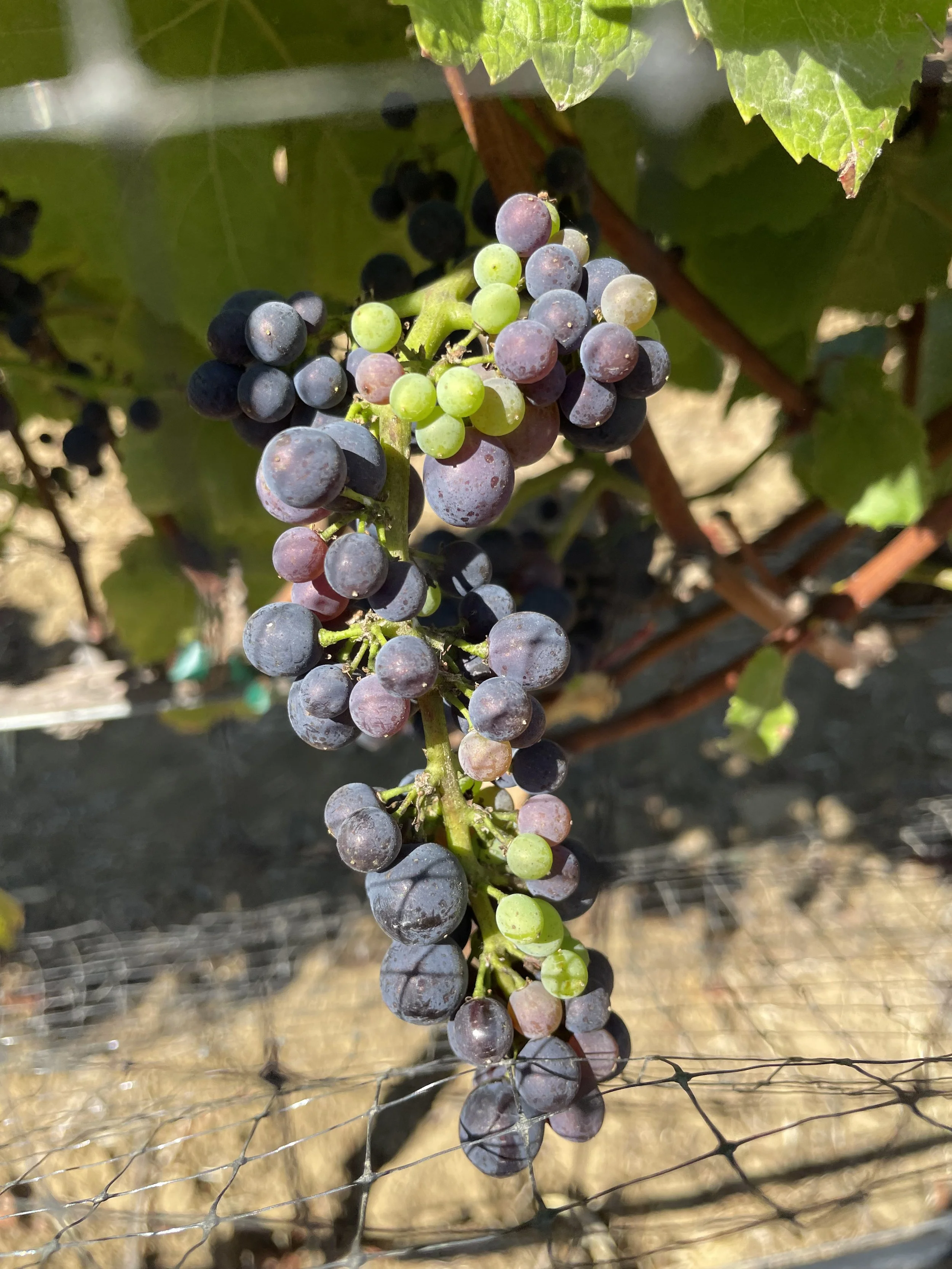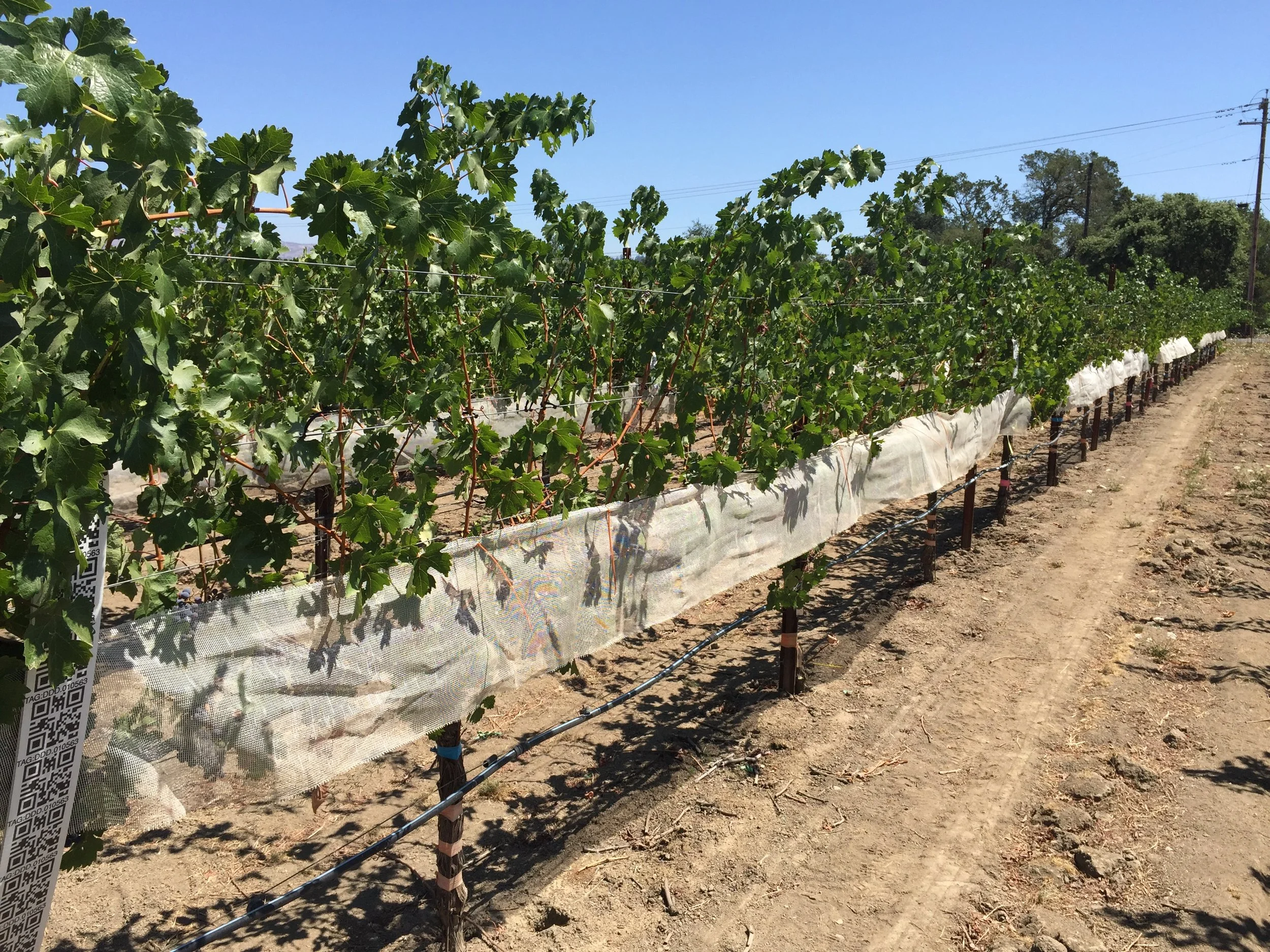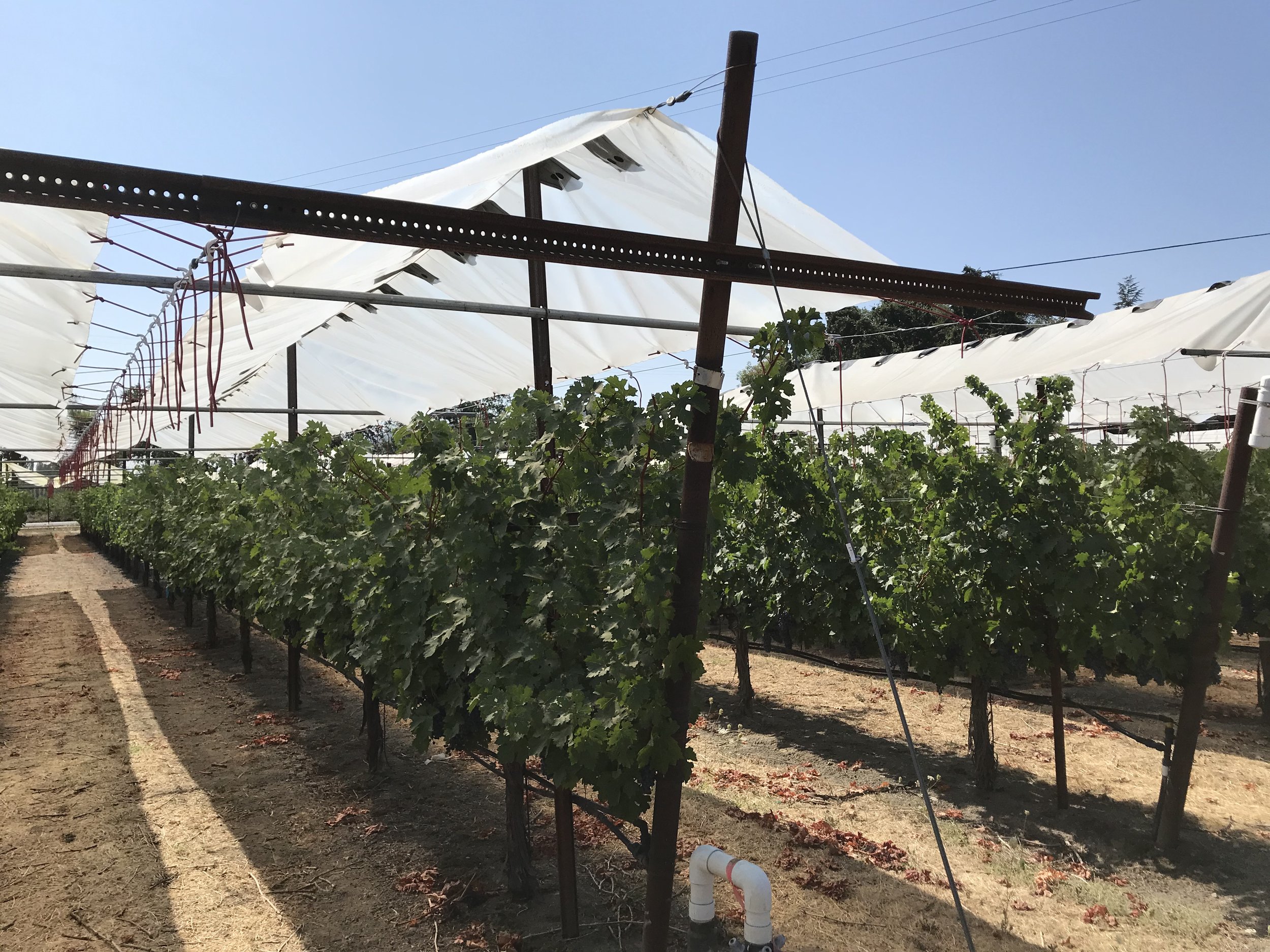Effect of Heat Stress on Grape Production in the San Joaquin Valley
By George Zhuang, Viticulture Farm Advisor, UCCE Fresno County
As the year concludes, I often reflect on the challenges of past growing seasons. Weather variability has significantly impacted grape production in the San Joaquin Valley (SJV), from the super cool 2023 season to wildfire smoke in 2020 and severe winter storms in 2021 and 2022. These events have led to suboptimal raisin drying conditions, high mildew and bunch rot incidence, delayed berry ripening, and inadequate raisin drying time. The 2024 growing season brought a prolonged heat wave, prompting concerns about its effects on grape yield and physiology. This discussion aims to summarize the short- and long-term impacts of heat waves on grape physiology and yield performance, alongside vineyard management practices to mitigate these effects.
Physiological Impacts of Heat Stress
Data from the UC IPM weather station at Kearney REC reveals that the daily maximum temperature inside canopy exceeded 100°F from June 21, 2024, through July 27, 2024 (Figure 1). Prolonged heat waves reduce stomatal conductance, which reduces photosynthesis, and thereby limits berry size and sugar accumulation. Detailed physiological effects from heat stress include:
Impaired Photosynthesis: Leaf photosynthesis operates optimally between 77°F and 86°F. Temperatures exceeding 110°F result in declines in stomatal conductance and photosynthesis. High temperature also increases photorespiration leading to a loss of carbon fixation and photosynthesis.
Elevated Respiration: Higher night temperatures from heat waves accelerate respiration, consuming stored carbohydrates faster and reducing carbohydrate supply for vine and fruit development.
Oxidative Stress: Heat stress leads to the accumulation of reactive oxygen species (ROS), which damage organelles such as chloroplasts and mitochondria, impairing essential metabolic processes.
Water Stress and Stomatal Closure: Heat stress intensifies water loss through transpiration, while stomatal closure to conserve moisture further limits gas exchange, compounding physiological strain.
Accelerated Senescence: Heat exacerbates physiological strain, hastening leaf senescence and reducing productive photosynthetic areas.
Figure 1. Daily Max ambient temperature (Max Temp) and Max temperature inside canopy (Max CanT) at UC Kearney REC Selma Pete vineyard between 06/01/24 and 08/01/24.
Direct Impacts on Yield Formation
Heat stress affects grape yield indirectly through impaired photosynthesis; however, more importantly, heat stress can affect grape yield directly. Yield components can be affected by heat stress, including:
Bud Fruitfulness: Cluster primordia forms between bloom and veraison and are highly dependent on temperature and sunlight. For example, sun-exposed “sun canes” of Thompson Seedless develop more fruitful buds than shaded canes. Heat stress during this period reduces photosynthetic carbon supply, negatively affecting next year’s crop potential.
Fruit Set: Heat stress interferes with pollen viability and production of auxins, preventing fertilization. Combined with water deficit during bloom, heat exacerbates poor fruit set and even bunch necrosis (Photo 1).
Berry Size: Berry growth follows a double-sigmoid curve, and heat stress during berry growth impairs cell division and elongation, leading to smaller, less plump berries (Photo 2).
Sugar Accumulation: Heat shifts carbon allocation towards vegetative growth, delaying fruit ripening and leading to uneven berry maturation.
Berry sunburn: Grape berries are designed to minimize water loss by transpiration, especially after veraison. Berries on the “afternoon sun” side of the canopy experience higher temperatures, risking sunburn due to limited evaporative cooling and insufficient protective phenolic accumulation (Photo 3).
Mitigation Strategies
Vineyard management should aim to minimize heat load and vine water stress, while enhancing evaporative cooling to protect both the canopy and the berries. Effective management practices that can mitigate the impacts of heat stress include:
Irrigation: Providing adequate irrigation before and during heat events supports vine transpiration and evaporative cooling. Pre-heatwave drip irrigation is especially critical. Although overhead misting—common in apple orchards, like in Washington—offers effective cooling, it may increase fungal disease risk in grapes
Canopy Management: Early-season leaf removal can balance sun exposure and airflow. However, late-season removal (post-veraison) can expose previously shaded berries to sunburn, especially if those berries lack phenolic "sunscreen" compounds (Photo 4).
Vine Row Orientation and Trellis Design: Orienting rows from southwest to northeast and selecting sprawling trellis systems can help reduce canopy temperature. Raising cordon and fruiting zones reduces soil heat radiation on the cluster zone.
Variety and Rootstock Selection: Planting heat-tolerant cultivars and drought-resilient rootstocks improves long-term vineyard resilience to climate extremes.
Shade Nets and Overhead Film: Shade nets and overhead films can reduce direct solar exposure and lower canopy temperatures, though cost and practicality must be considered (Photos 5a and 5b).
Sprayable Sunblock: Products like kaolin and calcium carbonate create reflective barriers, reducing heat absorption and protecting berries (Photo 6).
Cover crop: Inter-row cover crops increase soil reflectance and evapotranspiration, reducing soil heat accumulation and enhancing evaporative cooling. However, maintaining cover crops during summer may require additional irrigation.
Conclusion
The prolonged heat events of 2024 have underscored grower concerns about both immediate yield losses and the long-term impacts on future crops. While a range of mitigation strategies—such as trellis design, shade nets, and sprayable sunblock—can help reduce heat load, irrigation remains the most effective and accessible tool for short-term mitigation. Cover crops also provide cooling benefits but require additional irrigation to remain viable during summer.
Strategic pre-heatwave irrigation, combined with thoughtful canopy and vineyard design, can substantially reduce the physiological and yield-related impacts of extreme temperatures. For long-term climate resilience, the adoption of heat-tolerant cultivars and drought-resistant rootstocks will be essential.
By understanding how grapevines respond to heat stress, growers can implement targeted management practices to maintain vine health and productivity—ensuring sustainable grape production in the face of increasing climate variability.
This article was original posted to the Vit Tips Newsletter located at https://ucanr.edu/site/fresno-county-viticulture/collection/vit-tips-previously-newsletter-vinelines. Reposted here with permission of author.








